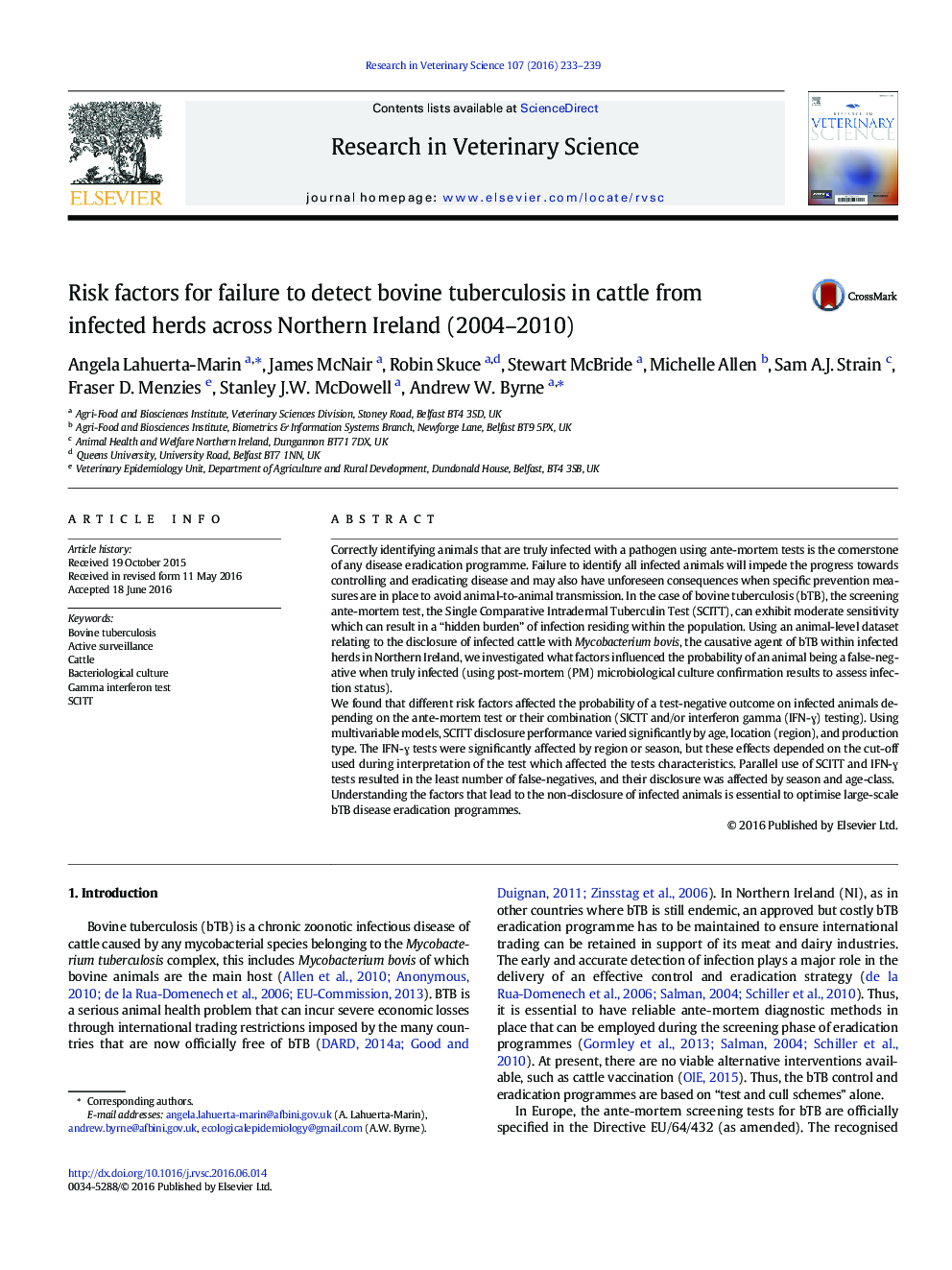| کد مقاله | کد نشریه | سال انتشار | مقاله انگلیسی | نسخه تمام متن |
|---|---|---|---|---|
| 5794425 | 1554304 | 2016 | 7 صفحه PDF | دانلود رایگان |
- Risk factors for cattle being disclosed as false-negatives were investigated.
- False-negatives were defined by SCITT, IFN-É£ tests and parallel use of these tests.
- Disclosure varied significantly across test types.
- Age, region, season and production type were risk factors for failure to disclose infection at the ante-mortem tests
- Knowledge of risk factors affecting non-disclosure of infected animals is essential to disease control programmes
Correctly identifying animals that are truly infected with a pathogen using ante-mortem tests is the cornerstone of any disease eradication programme. Failure to identify all infected animals will impede the progress towards controlling and eradicating disease and may also have unforeseen consequences when specific prevention measures are in place to avoid animal-to-animal transmission. In the case of bovine tuberculosis (bTB), the screening ante-mortem test, the Single Comparative Intradermal Tuberculin Test (SCITT), can exhibit moderate sensitivity which can result in a “hidden burden” of infection residing within the population. Using an animal-level dataset relating to the disclosure of infected cattle with Mycobacterium bovis, the causative agent of bTB within infected herds in Northern Ireland, we investigated what factors influenced the probability of an animal being a false-negative when truly infected (using post-mortem (PM) microbiological culture confirmation results to assess infection status).We found that different risk factors affected the probability of a test-negative outcome on infected animals depending on the ante-mortem test or their combination (SICTT and/or interferon gamma (IFN-É£) testing). Using multivariable models, SCITT disclosure performance varied significantly by age, location (region), and production type. The IFN-É£ tests were significantly affected by region or season, but these effects depended on the cut-off used during interpretation of the test which affected the tests characteristics. Parallel use of SCITT and IFN-É£ tests resulted in the least number of false-negatives, and their disclosure was affected by season and age-class.Understanding the factors that lead to the non-disclosure of infected animals is essential to optimise large-scale bTB disease eradication programmes.
Journal: Research in Veterinary Science - Volume 107, August 2016, Pages 233-239
